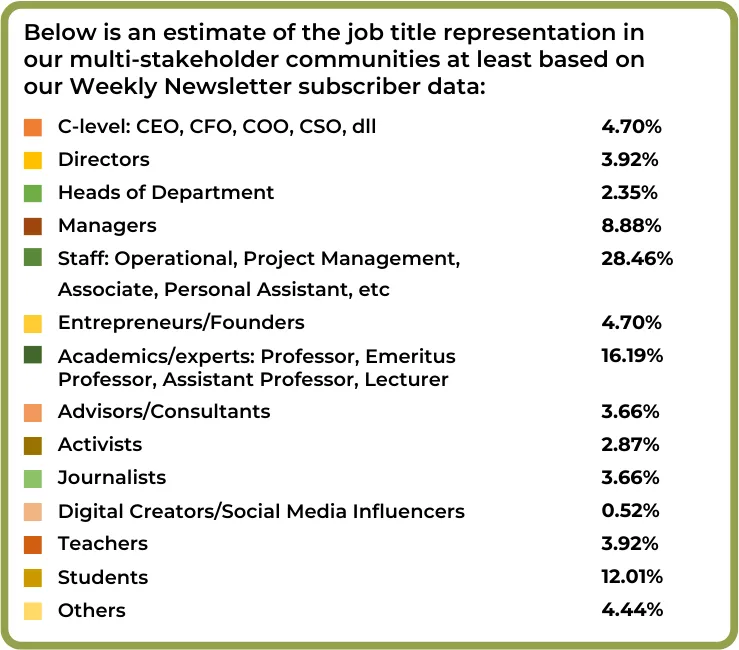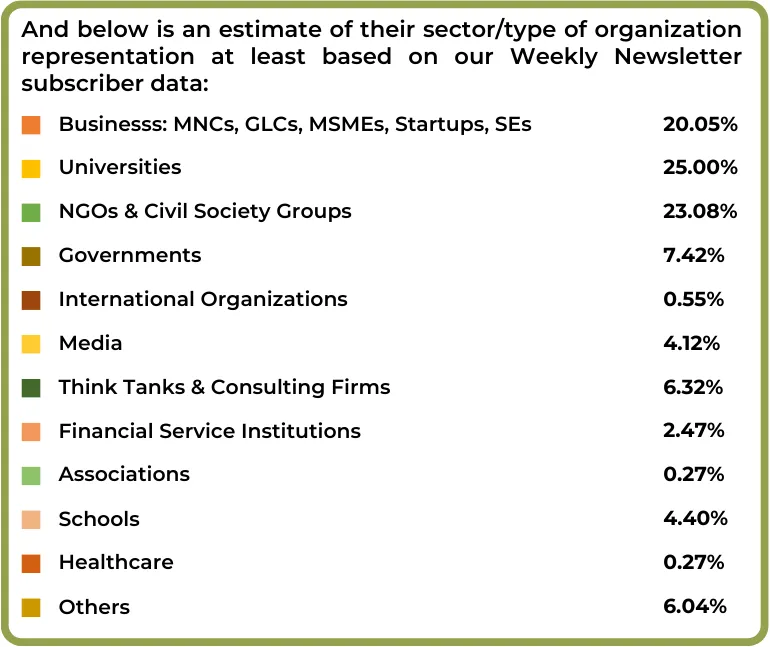Community Content Guidelines
Dear Green Network Asia Individual Members and Community Readers,
We would like to invite you to create and publish your digital content in Green Network Asia’s “Community” platform.
Mission
The role of communities -especially those at the grassroots level- for the realization of sustainable development around the world are instrumental yet often go unnoticed by wider audiences and the general public due to limited resources for publications.
At Green Network Asia, we work day to day empowering communities in different societies through digital content produced organically by our team. However, our limited time, energy, and resources are far from the potential of capturing so many stories in different corners of the world, including the complexity of unique voices, insights, experiences, wisdoms, efforts, and contributions in societies.
That’s why, we launched this “Community” platform to facilitate you publishing stories about whatever you see and learn in societies within the lens of sustainable development and sustainability, mainly on perspectives that serve the needs of grassroots communities and public interests.
Benefits
By publishing your digital content in Green Network Asia’s “Community” platform, you can amplify your authentic voices and unique stories organically, benefit from our editorial support, and reach our audience of multi-stakeholder communities who have passion, enthusiasm, aspiration, influence, and interest in sustainable development, as well as publics in the Asia Pacific and beyond.


Honorarium
We do not provide honorarium for the organically earned publications in Green Network Asia’s “Community” platform.
Submission Format
You may submit your “Community” content in the form of written articles, photo stories, advocacy posters, infographics, comics, or short-form videos.
Relevant Topics
To be relevant with Green Network Asia’s target audiences, your content should cover any of the following topics:
Poverty Eradication | Rural Development | Food Security | Nutrition | Sustainable Agriculture | Herbs and Spices | Health and Well-Being | Health and Population | Education | Culture | Gender Equality and Women’s Empowerment | Diversity, Equity, and Inclusion | Water and Sanitation | Energy Transition| Green Economy | Sustainable Tourism | Employment and Decent Work for All | Social Protection | Industry | Sustainable Transport | Reduced Inequalities | Youth | Children | Peoples with Disabilities | Indigenous Peoples Disaster Risk Reduction | Sustainable Cities and Human Settlements | Sustainable Consumption and Production | Chemicals and Waste | Climate Change | Atmosphere | Small Island Developing States | Oceans and Seas | Biodiversity and Ecosystems | Forest | Mountain | Desertification, Land Degradation, and Drought | Integrated Decision Making and Participation | Institutional Framework and International Cooperation for Sustainable Development | Capacity Development | Sustainable Finance | Financial Inclusion | Blended Finance | Multi-stakeholder Partnership and Voluntary Commitments | Science | Technology | Trade | Impact Investing | Blended Finance | Corporate Responsibility (CSR) | Corporate Accountability | ESG
Technical Guidelines
![]() Your submission must be original and has never been published on any other platforms before.
Your submission must be original and has never been published on any other platforms before.
![]() Your submission may share your voices, insights, experiences, wisdoms, and ideas; showcase good practices and lessons learned, policies, and projects from communities; or highlight concerns from communities.
Your submission may share your voices, insights, experiences, wisdoms, and ideas; showcase good practices and lessons learned, policies, and projects from communities; or highlight concerns from communities.
![]() You should hyperlink all data/sources/references available online into your article draft to ensure credibility and allow the audiences to learn further. Only legitimate sources are accepted.
You should hyperlink all data/sources/references available online into your article draft to ensure credibility and allow the audiences to learn further. Only legitimate sources are accepted.
![]() You should also include the links to all data, sources, and references available online you use in your non-article submissions.
You should also include the links to all data, sources, and references available online you use in your non-article submissions.
![]() Your submission should be authentic, easy-to-understand, and high-quality. For instance, you should write your article in easy reading and popular writing style while maintaining the quality of the content. Avoid clickbait, sensationalism, and greenwashing.
Your submission should be authentic, easy-to-understand, and high-quality. For instance, you should write your article in easy reading and popular writing style while maintaining the quality of the content. Avoid clickbait, sensationalism, and greenwashing.
![]() Your article should be within 500 – 600 words, including the title and subheadings.
Your article should be within 500 – 600 words, including the title and subheadings.
![]() Your short-form video should have a maximum duration of 1 minute, using the 9:16 aspect ratio in portrait. You can create an explainer video or advocacy video to support public causes that you care about.
Your short-form video should have a maximum duration of 1 minute, using the 9:16 aspect ratio in portrait. You can create an explainer video or advocacy video to support public causes that you care about.
![]() Your visual-based submission, such as an infographic, a photo story carousel, or an advocacy poster, should be in portrait mode with 1080×1350 resolution and 4:5 aspect ratio.
Your visual-based submission, such as an infographic, a photo story carousel, or an advocacy poster, should be in portrait mode with 1080×1350 resolution and 4:5 aspect ratio.
![]() For article submission, you may include one to three high-resolution images. The images should be original photos from communities that you feature. If you don’t have one, you can also use direct links of related images with creative common licensing. You must include the sources, captions you want to use, and alt-text for all images that you use.
For article submission, you may include one to three high-resolution images. The images should be original photos from communities that you feature. If you don’t have one, you can also use direct links of related images with creative common licensing. You must include the sources, captions you want to use, and alt-text for all images that you use.
![]() You should include alt-text for all visual elements and closed captioning for all audio elements in your submission. We strive to make our education and advocacy efforts accessible for as many people as possible.
You should include alt-text for all visual elements and closed captioning for all audio elements in your submission. We strive to make our education and advocacy efforts accessible for as many people as possible.
Editorial Decision
We do our best to read your submissions and notify you about our editorial decision as soon as possible within one week. If we don’t get back to you within one week, you may assume that we will not publish your content.
We do a careful final editing on your content before publication. This editing may include changes in the content, title, and images.
Submission
Please submit your content via email to [email protected] cc [email protected] with the subject “Community Submission: [Title]”.
In the body of the email, please include a short profile (name, job title, organization/community,/affiliation, etc – a maximum of 50 words) and a photo of the author.
We look forward to learning, sharing, and collaborating with you in the ecosystem of shared value for sustainable development.
Thank you.
Last updated: 26 June 2024

